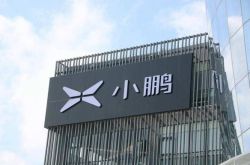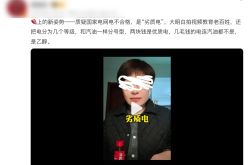Zoho in 2025: Redefining Success with AI, Platforms, and Ecosystems
![]() 05/06 2025
05/06 2025
![]() 530
530
Zoho is now redefining its capabilities in a new environment, focusing on AI-driven innovation, platform empowerment, and ecosystem support.
These three pillars form a new narrative for SaaS. Within this story, Zoho amplifies AI, product, technological, and demand disaggregation capabilities, while leveraging partner delivery and service capabilities to offer tailored AI and software services to numerous enterprises across various industries in China.
Author | Piye
Produced by | Chanyejia
After the Chinese New Year in 2025, Xia Haifeng has been incredibly busy. "After DeepSeek's breakthrough, numerous enterprises approached us for AI capabilities. Some have clear needs based on CRM, intelligent customer service, and BI, while others simply state they 'need AI,' without specifying their requirements."
Concurrently, another group of enterprises with similar needs emerged – those going global. According to incomplete statistics, as of May 2025, over 30% of enterprises in the Chinese market alone have started considering or strengthening their global layouts.
Xia Haifeng and Zoho have a keen understanding of these trends. "In the first quarter, we onboarded more than 40% new enterprises, with nearly 70% having global expansion needs."
These demands for AI and global expansion are prompting new reflections within Zoho: In today's environment, with the booming AI wave and new SaaS demands in vertical and segmented scenarios like going global, what should be the new offensive strategy for a software vendor positioned in the Chinese market? Or, how should one adjust their business model to better fulfill and accommodate new TO B market demands?
These questions are not unique to Zoho; they are also on the minds of many Chinese SaaS enterprises. With the emergence of industrial intelligence entities like Manus, shifts in international landscapes, and an overall rise in China's digitalization temperature, what should be the next capability foundation and core competitiveness for SaaS enterprises?
As these thoughts develop, a series of changes and adjustments have quietly taken place within Zoho, revealing new answers regarding AI products, platforms, and ecosystems.
In 2025, a new chapter in Zoho's evolution unfolds.
I. 2025: The Changing Landscape of SaaS
"We assess and evaluate almost every enterprise that comes to us," Xia Haifeng shared. "But for some, we need to help them clarify their AI needs and whether we can address them."
From a broader perspective, this is a challenge faced by almost all leading domestic SaaS vendors. How should service providers respond to the surging AI needs of enterprises?
This strategic positioning corresponds to the new market requirements for SaaS enterprises. With the advent of AI needs, other issues have arisen. On the demand side, some enterprises express their AI needs too narrowly and presumptuously. Additionally, some enterprises lack a robust data foundation. Moreover, when enterprises propose AI needs, they have stringent data security requirements.
On the supply side, service providers need to consider new funding and investment issues if they want to complete the AI transformation of their software sectors, such as CRM, ERP, low-code, BI, HR, etc. They must decide whether to integrate AI into their existing software, create a new AI Agent product, or rebuild core foundations like Agent PaaS (PaaS service based on intelligent agent platforms), similar to overseas TO B giants like Salesforce.
These changes have become the new external environment that almost all Chinese SaaS vendors must navigate in the past two years.
Beyond the exploding AI environment, the SaaS demand chain is also evolving.
In addition to the strong demand for global expansion mentioned earlier, Xia Haifeng also noted, "This year, many medium and large customers have put forth more personalized needs for Zoho's various products, including product functions, UI, and other aspects. Scenario-specific needs are continually intensifying."
This is understandable. As digitization permeates China's industrial landscape, two clear trends are emerging. Firstly, more enterprises across different traditional sectors are choosing specialized SaaS software, such as CRM and HR SaaS, as the foundation for their next stage of development. Secondly, enterprises that have been engaged in digitization for some time are beginning to adopt software forms that better align with their business models, leading to more personalized industrial demands for SaaS vendors.
However, for service providers, meeting these personalized needs is challenging. Whether it's CRM, EPR, low-code, or other product forms, fully satisfying industry-specific needs requires sufficient modular and industrialized PaaS platform capabilities, along with corresponding ecological delivery systems, to achieve enterprise satisfaction at lower costs and better outcomes.
Whether it's the burgeoning demand for AI or the deepening demand for industrialization, these factors constitute a new environment for SaaS enterprises, bringing fresh product and strategic considerations.
SaaS enterprises must adapt. But how? What should the new SaaS enterprise model look like to truly thrive in this new environment?
II. Evolving Zoho: Three Pillars, One Vision
"Actually, last year, our overall paid customer churn rate hit a new low, almost the lowest in years," Xia Haifeng told Chanyejia.
A sidenote about Zoho: while some SaaS enterprises in the Chinese market prioritize channels, others focus on customized delivery and personalized services, and still, others emphasize the product subscription model. Zoho is recognized for its products.
These products align with Zoho's All-in-One product system, led by CRM software. Through this service system, enterprises can address their digital needs across multiple internal environments.
"Our product cross-selling ratio increased significantly last year, with some sectors growing by around 30%, while others grew by up to 100%. This corresponds to an increase in the overall customer order value," Xia Haifeng said.
Despite this excellent performance, Xia Haifeng believes Zoho still needs to evolve.
But how to evolve and ensure the correctness of this direction? The reality is that while building a new service model, SaaS enterprises must also consider their entrepreneurial and business models.
However, driven by substantial real-world needs, Zoho quickly identified its direction. "We discussed internally for a long time, exploring ecological strategies, platform strategies, and more."
These discussions have now materialized into Zoho's new three pillars: AI evolution, platform model, and ecological strategy.
AI evolution is a given for almost all SaaS enterprises, but Zoho has chosen the most thorough approach – reconstructing AI capabilities from the ground up, based on the Agent PaaS form.
In other words, leveraging Agent PaaS capabilities, Zoho can help enterprises in different industrial scenarios and with diverse needs build a tailored Agent product system by combining various Agent modules, ensuring dedicated use and maximum satisfaction for specific enterprises.
It's worth noting that this is the same approach Salesforce has taken to enter the AI space. In the Chinese market, no vendor has yet issued corresponding action signals for this method. "In fact, we've already been working with some partners to develop Agents, helping traditional industries enhance efficiency in conjunction with hardware. But once Agent PaaS is established, we can offer them more flexible and suitable AI capabilities."
Next is the platform strategy. If one of Zoho's previous labels was strong product capability, it will now accelerate transforming this into "platform capability," truly stepping back from product delivery to empower ecological partners and enterprises as a platform. This includes not only the inherent development of over 55+ product capabilities but also the opening up of capabilities like the PaaS layer and the upcoming AI PaaS layer, providing the market with platform atomization component capabilities.
Corresponding to the platform strategy is another significant adjustment – the ecological strategy. "Many enterprises have a strong need to go global, and across different industries, China's industrial SaaS needs are booming. We need to collaborate with ecological partners to serve enterprise customers," Xia Haifeng said.
Indeed, according to data, in vertical industries, the global vertical SaaS market, tailored to specific industry needs like healthcare, education, agriculture, etc., reached a total sales volume of $91.19 billion in 2023 and is expected to reach $234.73 billion by 2030, with a compound annual growth rate of 16.3%. In the Chinese market, this personalized SaaS demand for industries is also accelerating.
This strategy, which has been discussed the longest within Zoho, is now being implemented most thoroughly.
Driven by this strategy, several initiatives are being promoted simultaneously: On one hand, Zoho will open up a significant portion of its delivery leads to ecological partners, enabling them to handle delivery while supporting their growth. On the other hand, its original product delivery team will transform into an ecological partner service system to empower and support ecological partners at any time. Additionally, the front-end product research and development team will be strengthened to leverage product/platform capabilities and help ecological partners hone stronger product offerings.
"We expect to cultivate some large ecological partners in each region by the second quarter of this year," Xia Haifeng said. "And in the next 3-5 years, our ecological strategy will be further strengthened and amplified."
In fact, these three strategic pillars align with Zoho's personalized solution capabilities for the Chinese market, such as its robust product capabilities (front-end products and underlying PaaS modular capabilities), its market reputation for being "more than worth the money," and as an international enterprise, its commitment to complete and thorough investment in AI.
These unique capability models are now being transformed by Zoho into corresponding new evolution directions in the new environment – AI-driven, platform empowerment, and ecosystem support.
Or perhaps it can be said that these three pillars also constitute a new SaaS narrative. In this story, Zoho amplifies the AI, product, technological, and demand disaggregation capabilities of enterprises, while fully leveraging partner delivery and service capabilities, thereby providing more segmented and tailored AI and software services to numerous enterprises across various industries in China.
III. In the AI Era: The Future of Chinese SaaS
Where will Chinese SaaS go in 2025? This question is being asked of every SaaS enterprise.
Accompanying this question is the increasingly divergent trend in the domestic SaaS industry, such as investments, mergers and acquisitions in various directions, strong alliances, new ecological policies across different sectors, and agile or resistant responses to the arrival of AI.
These factors are shaping the internal environment of the SaaS industry – the inherent SaaS consensus is being challenged, and new SaaS definitions and measurement standards are on the horizon.
But the demand is real, and the new supply capacity to meet this demand is also clear. This new "supply and demand" dynamic is already evident in overseas markets. For example, foreign SaaS giants like Salesforce, ServiceNow, and Workday have been continuously adjusting their product and service models over the past two years, whether it's the comprehensive transformation of inherent products based on the AI Agent system or the new adjustment of organizational structures (like Salesforce announcing the recruitment of 4,000 new AI salespeople), all becoming new supplements to the SaaS service form.
In fact, this is also the evolution philosophy embodied in Xia Haifeng and Zoho's strategies – taking demand as the anchor point and demanding results from products, ecosystems, and organizational capabilities based on the TO B supply and demand model.
Whether it's comprehensive AI integration based on Agent PaaS or full reinforcement of platforms and ecosystems, these strategies collectively aim to build Zoho's new demand satisfaction capability model. On this new model, going global will not only be Zoho's biggest "sweet spot" but also a series of AI personalized needs, industry CRM, and other SaaS needs will become new coverage areas for this leading SaaS enterprise.
In other words, there needs to be depth in technology vertically and breadth in the service model horizontally. "In fact, many people in the Chinese market are still unaware of software like CRM. Even many enterprises only use financial software, and these are all potential market spaces for the future."
Despite the considerable challenges the SaaS industry faces, as perceived by the outside world, relevant data projections indicate that in the coming years, general SaaS (CRM/ERP) will continue to maintain a growth rate of 15%-20%. Vertical industry SaaS (such as healthcare and education) will expand at a faster pace of 25%-35%, fueled by policy inclinations. Furthermore, the growth rate of the "PaaS+SaaS integration" delivery solution is anticipated to exceed 30%.
These figures underscore the robust vitality of China's digital market and the vast, untapped potential that the SaaS industry can continue to explore.
"The Chinese market has always been a pioneer in demand creation," said Xia Haifeng. "Many problems we identified years ago are only now emerging in other countries and regions, yet we have already effectively addressed them within the domestic market. Although China's revenue contribution may not be the highest globally, our insights into Zoho's comprehensive product suite, demand generation, and future planning hold significant implications."
The year 2025 is often referred to as the inaugural year for large models to take root. For companies like Zoho, this year of transformation is also a pivotal moment to narrate a fresh chapter.
This narrative encompasses not just globalization but also AI technology, platforms, the unique ecological model thriving in China, and the promising future of Zoho.





